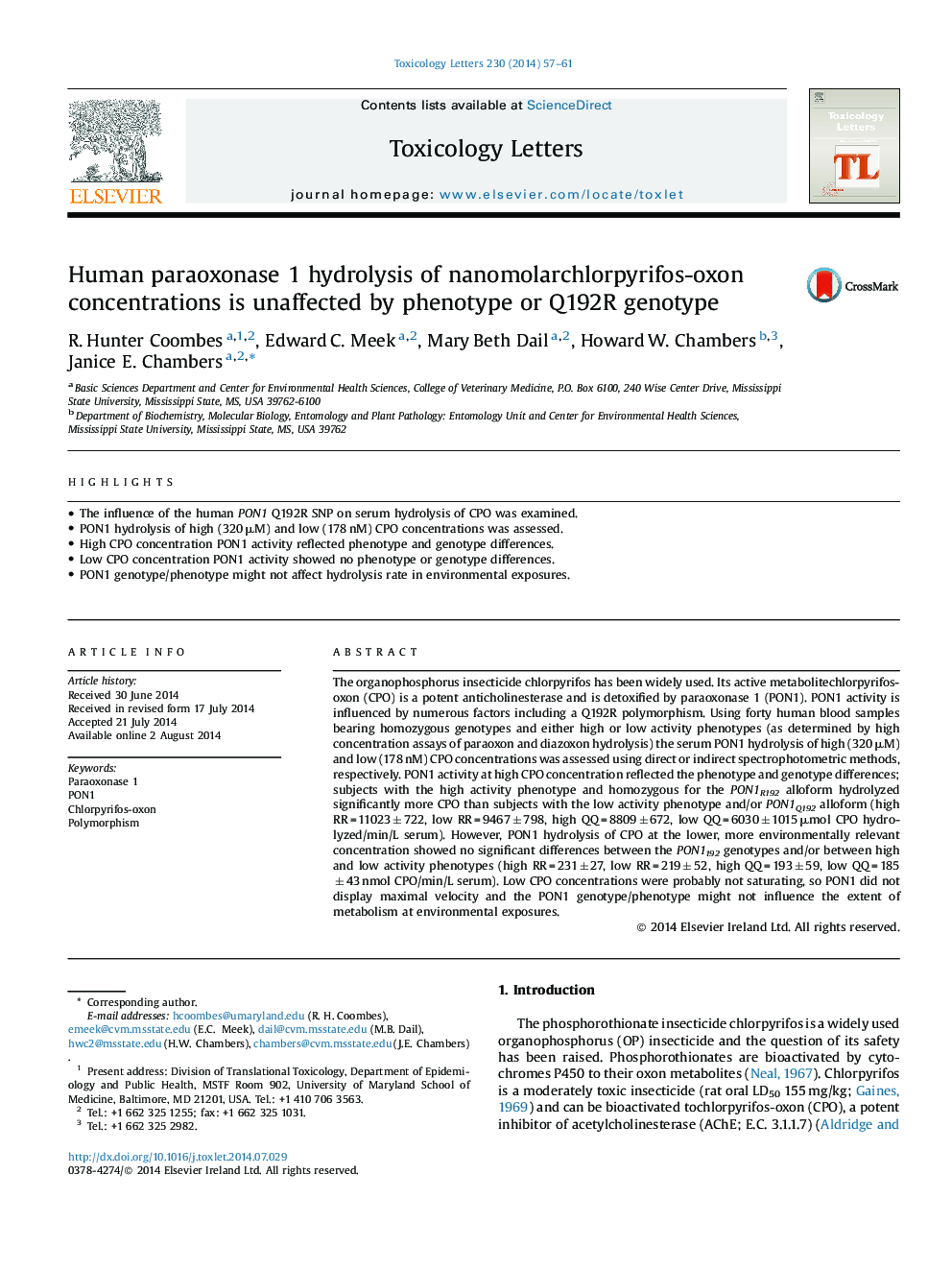| کد مقاله | کد نشریه | سال انتشار | مقاله انگلیسی | نسخه تمام متن |
|---|---|---|---|---|
| 2598927 | 1133170 | 2014 | 5 صفحه PDF | دانلود رایگان |

• The influence of the human PON1 Q192R SNP on serum hydrolysis of CPO was examined.
• PON1 hydrolysis of high (320 μM) and low (178 nM) CPO concentrations was assessed.
• High CPO concentration PON1 activity reflected phenotype and genotype differences.
• Low CPO concentration PON1 activity showed no phenotype or genotype differences.
• PON1 genotype/phenotype might not affect hydrolysis rate in environmental exposures.
The organophosphorus insecticide chlorpyrifos has been widely used. Its active metabolite chlorpyrifos-oxon (CPO) is a potent anticholinesterase and is detoxified by paraoxonase 1 (PON1). PON1 activity is influenced by numerous factors including a Q192R polymorphism. Using forty human blood samples bearing homozygous genotypes and either high or low activity phenotypes (as determined by high concentration assays of paraoxon and diazoxon hydrolysis) the serum PON1 hydrolysis of high (320 μM) and low (178 nM) CPO concentrations was assessed using direct or indirect spectrophotometric methods, respectively. PON1 activity at high CPO concentration reflected the phenotype and genotype differences; subjects with the high activity phenotype and homozygous for the PON1R192 alloform hydrolyzed significantly more CPO than subjects with the low activity phenotype and/or PON1Q192 alloform (high RR = 11023 ± 722, low RR = 9467 ± 798, high QQ = 8809 ± 672, low QQ = 6030 ± 1015 μmol CPO hydrolyzed/min/L serum). However, PON1 hydrolysis of CPO at the lower, more environmentally relevant concentration showed no significant differences between the PON1192 genotypes and/or between high and low activity phenotypes (high RR = 231 ± 27, low RR = 219 ± 52, high QQ = 193 ± 59, low QQ = 185 ± 43 nmol CPO/min/L serum). Low CPO concentrations were probably not saturating, so PON1 did not display maximal velocity and the PON1 genotype/phenotype might not influence the extent of metabolism at environmental exposures.
Journal: Toxicology Letters - Volume 230, Issue 1, 1 October 2014, Pages 57–61